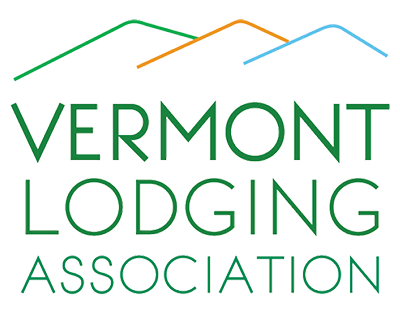Innkeepers are a busy bunch. To save you time, VLA attends Governor Scott’s Covid-19 Press Conferences and takes notes for you. Below is the summary from 2.23.21
- Evidence shows that vaccinations are helping Vermont emerge from the pandemic. Our vaccine allocation continues to increase.
- Over 91,000 Vermonter’s have been vaccinated against Covid-19. 44,700 Vermonters have received their first dose; 46,400 Vermonters have received their last dose.
- 66% of Vermonters in the 75+ age group and 18% of Vermonters in the 70–74+ age group have received at least their first dose of the vaccine. Approximately 1,122 homebound Vermonters have received their first dose of the vaccine.
- Phase 3 vaccine program has made great progress. On Monday, March 1, at 8:15 am, Vermonters in the 65+ age group will eligible to make an appointment to receive the vaccine. There are approximately 42,000 Vermonters in this category.
- Those in the high risk category, or phase 5, make up 75,000 Vermonters age 16–64. The State plans to open registration for this phase in a few weeks. More information to come next week.
- National demand still outweighs the federal government’s ability to supply enough vaccines to meet that demand. Over 90% of Covid-19 deaths in have been individuals over 65 years old. For that reason, they remain the highest risk and the highest priority in Vermont.
- Many Vermonters still have not been vaccinated—we need to remain vigilant about social distancing, wearing masks, and getting tested immediately upon experiencing symptoms.
1099 Update:
- Claimants can expect new 1099 documents next week.
- Mass recall of all DOL 1099 mail-in documents that were mailed in early February. Individuals received pre-paid envelopes to return their original 1099 to the Department. If you received an envelope but not a 1099, it is likely because it was stopped before you received it (this is a good thing).
- Most claimants will receive multiple 1099 documents from the DOL. This is not a mistake. A separate document will be issued for each program under which a claimant may receive benefits. This number could reach up to four.
- Lost Wages Assistance Program
- Vermont Short-term Supplemental Benefit Program
- $1200 pre-paid benefit from the State Treasury
- Taxes were not withheld from any benefit program. This means claimants are responsible for filing their taxes accordingly.
Modeling Update:
- Cases, hospitalizations, and deaths show improving trends regionally, nationally, and here in Vermont. The light at the end of the tunnel has never appeared brighter, but we must remain vigilant with the warm weather coming.
- The U.S. has seen 6 straight weeks of decreasing case growth. The 7-day new case average fell 74% during those 6 weeks, reaching the lowest average since the third week of October. It is now lower than the national peak from this past summer. 47 states are experiencing fewer cases this week than last week. National forecast anticipate further decreases in cases over the next few weeks.
- Hospitalization has decreased for 6 straight weeks, falling 54% during that time. The 7-day average is now below 60,000 people currently hospitalized. This number aligns with low averages from the summer months. This decrease is also geographically broad with 49 states seeing improvement this week compared to last.
- Most thankfully, we’re continuing to see improvement in U.S. daily fatality rates, with the 7-day average fatality rates falling 36% in the last 14 days. With national cases forecasted to continue their decline, we can anticipate fewer hospitalizations and deaths in the coming weeks.
- On a less optimistic note, the U.S. crossed a grim milestone with over 500,000 deaths now attributable to Covid-19. In just under a year, Covid-19 now ranks as one of the deadliest events in U.S. history, surpassing deaths from previous wars and inching closer to the 1918 pandemic.
- The Northeast experienced 7,000 cases this week, a 14,000 decrease from the previous week. Regional cases have declined for 6 weeks straight. Continued significant improvement in rural and urban areas throughout New England. The regional forecast anticipates further improvements through March and April. However, it is not clear how new variants will effect these predicted trends.
- Reported 727 new cases in Vermont in the past week. This is an 89 case decrease compared to last week. The 7-day average fell nearly 40% since early January. Although we’re only seeing gradual improvements in overall case counts, improvements in the 75+ age group are significant. Cases in that age group have declined 71% in the past month, and vaccines are continuing to protect more Vermonters in that age group.
- Vermont has fewer deaths in February compared the January and December.
- Bennington and Essex counties have seen significant improvements; Franklin County has not seen significant improvements but is remaining stable.
- Decreased active outbreaks in long-term care facilities has decreased to just 3.
- For the next 6 weeks, Vermont can expect to see cases continue to decrease and fall more dramatically in the Spring.
- Statewide hospitalization is expected to decline with the decline in new cases. Vermont has plenty of resources to treat those who need care.
- College restart: 82 new cases on college campuses, bringing the semester total to 417.
- Recent CDC data shows that Vermont’s pace is steadily ranked second in the northeast and 10th in the Nation, in vaccines administered per 100 residents. Vermont is now ranked 9th nationally for the number of fully vaccinated residents in the State.
- Today in Vermont, there are 82 new cases, 36 hospitalizations and 12 people in the ICU, and 2 deaths.
- The overall decreases in cases, hospitalizations, and deaths over the last 6 weeks is attributable to the fact that there have been spikes due to holiday gatherings over the last few months. It’s also likely that wearing masks and following guidelines played a role.
- The Moderna and Pfizer vaccines are about 95% effective for people who receive both doses. Science says both doses are necessary to reach a lasting level of protection; the second dose increases the strength of the body’s new antibody production following the first dose. Partial vaccination could create the potential for the virus to mutate.
- The U.K. and Israel are distributing as many first doses as possible until they have enough resources to provide second doses. Efficacy is slightly reduced at 85%. This approach may be an advantage as resources dwindle, but it also gives the virus a chance to mutate before second doses become available. Vermont is constantly evaluating the science and will notify residents if our approach changes.
- For those who fear getting vaccinated because of unknown side effects, the body’s immune reaction after the second dose is the most significant side effect. Detailed reports of 7,000 adverse effects so far, 91% of which were deemed “not serious” and disappeared within a day or two. It is rare to experience more serious side effects.
- As new vaccines become available, some with a slightly lower effectiveness percentage are no less beneficial.
Governor’s Vaccine Update from the White House:
- 13.5 million vaccines allocated nationally last week. This week that number will increase to 14.5 million, which will be about a thousand more doses in Vermont.
- Federal pharmacy program will increase from 2 to 2.1 million this week, which will provide about 100 more doses in vermont.
- Johnson & Johnson hopes to receive emergency use authorization this week. Upon approval, we can expect 2 million doses nationally, which would bring about 2,000 more doses into Vermont each week. The company could not commit to a steady supply over three weeks, but they anticipate 20 million doses by the end of March.
- Last week’s storms did impact distribution, but not significantly in Vermont.
- CDC and the White House emphasized the importance of following safety guidelines now and as the weather gets warmer.
- Vermonters who have been fully vaccinated can now travel without quarantine restrictions. Out of state visitors who can prove that they are fully vaccinated may now visit Vermont without quarantine restrictions.
- The first step of gathering restrictions will involve many unknowns, but the administration is taking a methodical approach: Any household who has been fully vaccinated can gather with another household, even if that household has not been vaccinated. The vaccine protects people from contracting the virus and from spreading it. But this new freedom is limited to one household at a time.
Questions:
- There is a church in Chester that meets every week without masks—they claim not to need masks because they’re “covered with prayer.” Dr. Levine responded saying they could provide more educational materials and “see what’s going on there.” Commissioner Shearling recommended reporting the events to the “local agency.”
- There was a rally in Newport against the Governor’s Covid-19 mandate recently. The Attorney General’s directive instructs law enforcement who encounter noncompliant businesses or individuals to provide education and request voluntary compliance. If noncompliance continues, law enforcement will report those issues and the Attorney General’s Office will work with law enforcement to develop an appropriate response. The directive also clarifies the available penalties: A civil violation of up to $1,000 per violation per day and criminal violation of up to $500 fine and/or up to 6 months imprisonment.
- Prison inmates are in the 70–74+ age bracket will receive their vaccines like every other resident in the State.
- Loss of life remains Vermont’s number one priority in terms of vaccine distribution.
- Lodging establishments should visit the Agency of Commerce website to find specific guidance for those businesses.
- People who have been vaccinated should be carrying their vaccine cards.
- Congress extended additional $300 unemployment compensation for 11 weeks. This extension ends between March 13 and April 10, depending on when an individual enrolled, but some federal programs may provide unemployment benefits beyond that date.

